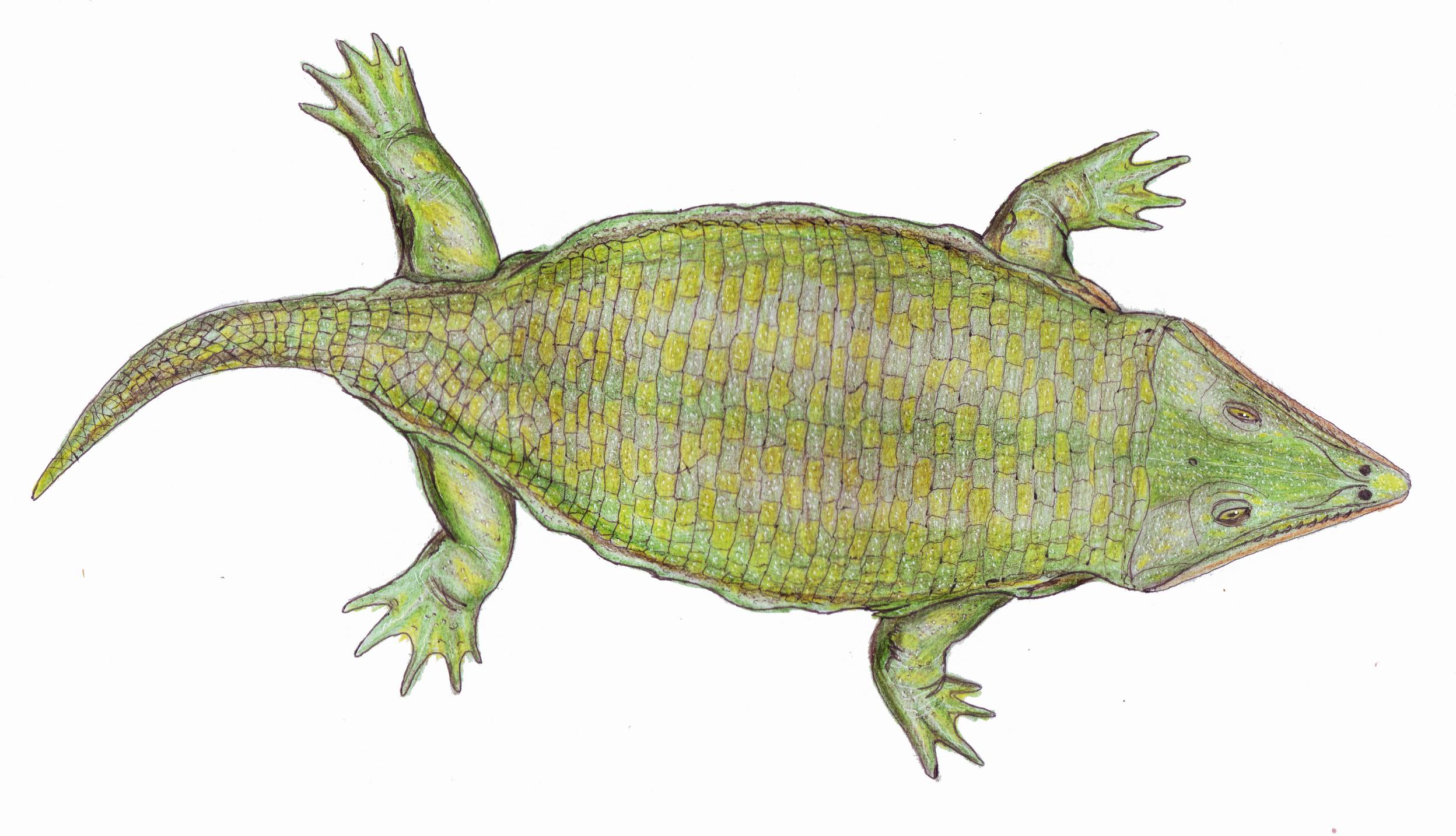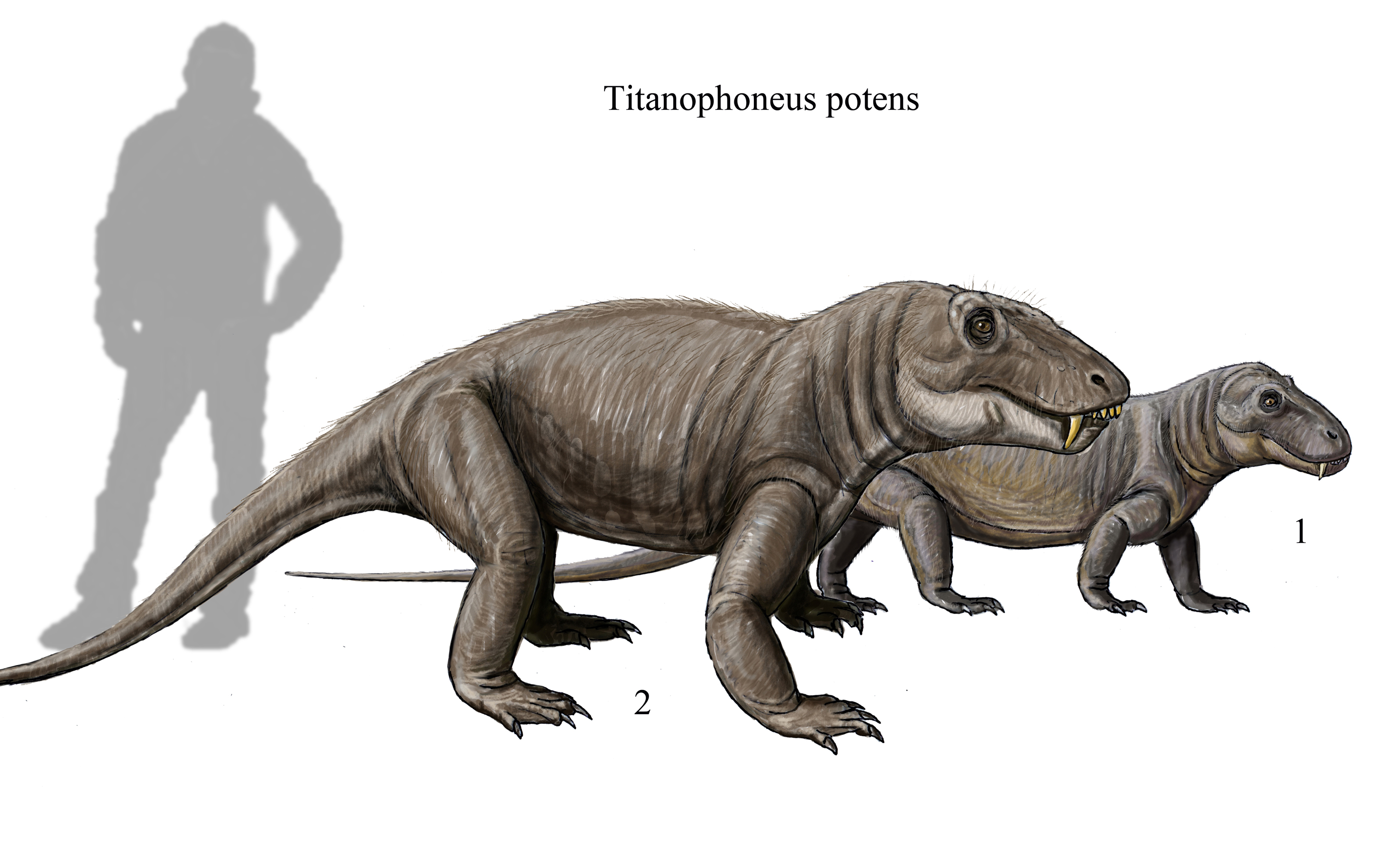|
Iratusaurus
''Iratusaurus'' is an extinct genus of dissorophoid temnospondyl within the family Dissorophidae. It was described by Gubin (1980) on the basis of a fragmentary posterior skull. It is estimated to have been comparably large to ''Kamacops'', another Russian dissorophid, but little more can be said about it, and it is rarely mentioned in comparative descriptions and has never been tested in a phylogenetic analysis. Distinguishing features include a large, triangular otic notch and a median crest on the postparietals. See also * List of prehistoric amphibians This list of prehistoric amphibians is an attempt to create a comprehensive listing of all genera from the fossil record that have ever been considered to be amphibians, excluding purely vernacular terms. The list includes all commonly accepted g ... References Dissorophids Permian temnospondyls Fossils of Russia Prehistoric amphibian genera {{temnospondyli-stub ... [...More Info...] [...Related Items...] OR: [Wikipedia] [Google] [Baidu] |
Dissorophids
Dissorophidae is an extinct family of medium-sized, temnospondyl amphibians that flourished during the late Carboniferous and early Permian periods. The clade is known almost exclusively from North America. History of study Dissorophidae is a diverse clade that was named in 1902 by George A. Boulenger. Junior synonyms include Otocoelidae, Stegopidae, and Aspidosauridae. Early in the study of dissorophoids when the relationships of different taxa were not well-resolved and most taxa had not been described, Dissorophidae sometimes came to include taxa that are now not regarded as dissorophids and may have excluded earlier described taxa that are now regarded as dissorophids. Amphibamiforms were widely regarded as small-bodied dissorophids, and at one point, Dissorophidae was also suggested to also include Trematopidae. 19th century In 1895, American paleontologist Edward Drinker Cope named ''Dissorophus'' from the early Permian of Texas. This was the first dissorophid to be de ... [...More Info...] [...Related Items...] OR: [Wikipedia] [Google] [Baidu] |
Dissorophidae
Dissorophidae is an extinct family of medium-sized, temnospondyl amphibians that flourished during the late Carboniferous and early Permian periods. The clade is known almost exclusively from North America. History of study Dissorophidae is a diverse clade that was named in 1902 by George A. Boulenger. Junior synonyms include Otocoelidae, Stegopidae, and Aspidosauridae. Early in the study of dissorophoids when the relationships of different taxa were not well-resolved and most taxa had not been described, Dissorophidae sometimes came to include taxa that are now not regarded as dissorophids and may have excluded earlier described taxa that are now regarded as dissorophids. Amphibamiforms were widely regarded as small-bodied dissorophids, and at one point, Dissorophidae was also suggested to also include Trematopidae. 19th century In 1895, American paleontologist Edward Drinker Cope named '' Dissorophus'' from the early Permian of Texas. This was the first dissorophid to b ... [...More Info...] [...Related Items...] OR: [Wikipedia] [Google] [Baidu] |
Kamacops
''Kamacops'' is a genus of dissorophid temnospondyls known from the Middle to Late Permian of Russia that was described by Yuri Gubin in 1980. It is known from a single species, ''Kamacops acervalis,'' material of which is currently reposited in the Paleontological Institute of the Russian Academy of Sciences. ''Kamacops'' is one of the youngest dissorophids, along with '' Iratusaurus'' and ''Zygosaurus'' from Russia and '' Anakamacops'' from China and was one of the largest known dissorophids, with an estimated skull length of 24–30 cm. It is typically recovered as being most closely related to ''Zygosaurus'' and to the North American ''Cacops ''Cacops'' ("ugly look" for its strange appearance), is a genus of dissorophid temnospondyls from the Kungurian stage of the early Permian of the United States. ''Cacops'' is one of the few olsoniforms (dissorophids and the larger trematopids ...''''.'' A detailed study of the braincase region was performed by Schoch (1999) ... [...More Info...] [...Related Items...] OR: [Wikipedia] [Google] [Baidu] |
List Of Prehistoric Amphibians
This list of prehistoric amphibians is an attempt to create a comprehensive listing of all genera from the fossil record that have ever been considered to be amphibians, excluding purely vernacular terms. The list includes all commonly accepted genera, but also genera that are now considered invalid, doubtful (''nomina dubia''), or were not formally published ('' nomina nuda''), as well as junior synonyms of more established names, and genera that are no longer considered amphibians. Modern forms are excluded from this list. The list currently includes 454 names. Naming conventions and terminology Naming conventions and terminology follow the International Code of Zoological Nomenclature. Technical terms used include: * Junior synonym: A name which describes the same taxon as a previously published name. If two or more genera are formally designated and the type specimens are later assigned to the same genus, the first to be published (in chronological order) is the senior synon ... [...More Info...] [...Related Items...] OR: [Wikipedia] [Google] [Baidu] |
Middle Permian
The Guadalupian is the second and middle series/ epoch of the Permian. The Guadalupian was preceded by the Cisuralian and followed by the Lopingian. It is named after the Guadalupe Mountains of New Mexico and Texas, and dates between 272.95 ± 0.5 – 259.1 ± 0.4 Mya. The series saw the rise of the therapsids, a minor extinction event called Olson's Extinction and a significant mass extinction called the end-Capitanian extinction event. The Guadalupian was previously known as the Middle Permian. Name and background The Guadalupian is the second and middle series or epoch of the Permian. Previously called Middle Permian, the name of this epoch is part of a revision of Permian stratigraphy for standard global correlation. The name "Guadalupian" was first proposed in the early 1900s, and approved by the International Subcommission on Permian Stratigraphy in 1996. References to the Middle Permian still exist. The Guadalupian was preceded by the Cisuralian and followed by ... [...More Info...] [...Related Items...] OR: [Wikipedia] [Google] [Baidu] |
Genus
Genus ( plural genera ) is a taxonomic rank used in the biological classification of living and fossil organisms as well as viruses. In the hierarchy of biological classification, genus comes above species and below family. In binomial nomenclature, the genus name forms the first part of the binomial species name for each species within the genus. :E.g. '' Panthera leo'' (lion) and '' Panthera onca'' (jaguar) are two species within the genus ''Panthera''. ''Panthera'' is a genus within the family Felidae. The composition of a genus is determined by taxonomists. The standards for genus classification are not strictly codified, so different authorities often produce different classifications for genera. There are some general practices used, however, including the idea that a newly defined genus should fulfill these three criteria to be descriptively useful: # monophyly – all descendants of an ancestral taxon are grouped together (i.e. phylogenetic analysis should c ... [...More Info...] [...Related Items...] OR: [Wikipedia] [Google] [Baidu] |
Dissorophoidea
Dissorophoideans are a clade of medium-sized, temnospondyl amphibians that appeared during the Moscovian in Euramerica, and continued through to the Late Permian and the Early Triassic of Gondwana. They are distinguished by various details of the skull, and many forms seem to have been well adapted for life on land. Since 2008, Lissamphibia has been progressively widely considered part of this clade, but this position is still disputed by some authors. It is possible that the small Permo-Carboniferous Micromelerpetontidae and the large Late Permian Melosauridae may also belong in this clade. Phylogeny An extensive phylogenetic analysis of dissorophoids conducted in 2016 and 2018 found that the families Dissorophidae and Trematopidae are more closely related to each other than either is to the family Amphibamidae. Following a 2008 study, the Dissorophidae-Trematopidae clade was called Olsoniformes. Below is the cladogram from the 2018 analysis: References * Huttenlocker, ... [...More Info...] [...Related Items...] OR: [Wikipedia] [Google] [Baidu] |
Temnospondyl
Temnospondyli (from Greek τέμνειν, ''temnein'' 'to cut' and σπόνδυλος, ''spondylos'' 'vertebra') is a diverse order of small to giant tetrapods—often considered primitive amphibians—that flourished worldwide during the Carboniferous, Permian, and Triassic periods. A few species continued into the Jurassic and Cretaceous periods. Fossils have been found on every continent. During about 210 million years of evolutionary history, they adapted to a wide range of habitats, including freshwater, terrestrial, and even coastal marine environments. Their life history is well understood, with fossils known from the larval stage, metamorphosis, and maturity. Most temnospondyls were semiaquatic, although some were almost fully terrestrial, returning to the water only to breed. These temnospondyls were some of the first vertebrates fully adapted to life on land. Although temnospondyls are considered amphibians, many had characteristics, such as scales and armour-like bo ... [...More Info...] [...Related Items...] OR: [Wikipedia] [Google] [Baidu] |
Family (biology)
Family ( la, familia, plural ') is one of the eight major hierarchical taxonomic ranks in Linnaean taxonomy. It is classified between order and genus. A family may be divided into subfamilies, which are intermediate ranks between the ranks of family and genus. The official family names are Latin in origin; however, popular names are often used: for example, walnut trees and hickory trees belong to the family Juglandaceae, but that family is commonly referred to as the "walnut family". What belongs to a family—or if a described family should be recognized at all—are proposed and determined by practicing taxonomists. There are no hard rules for describing or recognizing a family, but in plants, they can be characterized on the basis of both vegetative and reproductive features of plant species. Taxonomists often take different positions about descriptions, and there may be no broad consensus across the scientific community for some time. The publishing of new data and opi ... [...More Info...] [...Related Items...] OR: [Wikipedia] [Google] [Baidu] |
Permian Temnospondyls
The Permian ( ) is a geologic period and stratigraphic system which spans 47 million years from the end of the Carboniferous Period million years ago (Mya), to the beginning of the Triassic Period 251.9 Mya. It is the last period of the Paleozoic Era; the following Triassic Period belongs to the Mesozoic Era. The concept of the Permian was introduced in 1841 by geologist Sir Roderick Murchison, who named it after the region of Perm in Russia. The Permian witnessed the diversification of the two groups of amniotes, the synapsids and the sauropsids ( reptiles). The world at the time was dominated by the supercontinent Pangaea, which had formed due to the collision of Euramerica and Gondwana during the Carboniferous. Pangaea was surrounded by the superocean Panthalassa. The Carboniferous rainforest collapse left behind vast regions of desert within the continental interior. Amniotes, which could better cope with these drier conditions, rose to dominance in place of their amph ... [...More Info...] [...Related Items...] OR: [Wikipedia] [Google] [Baidu] |
Fossils Of Russia
A fossil (from Classical Latin , ) is any preserved remains, impression, or trace of any once-living thing from a past geological age. Examples include bones, shells, exoskeletons, stone imprints of animals or microbes, objects preserved in amber, hair, petrified wood and DNA remnants. The totality of fossils is known as the ''fossil record''. Paleontology is the study of fossils: their age, method of formation, and evolutionary significance. Specimens are usually considered to be fossils if they are over 10,000 years old. The oldest fossils are around 3.48 billion years old to 4.1 billion years old. Early edition, published online before print. The observation in the 19th century that certain fossils were associated with certain rock strata led to the recognition of a geological timescale and the relative ages of different fossils. The development of radiometric dating techniques in the early 20th century allowed scientists to quantitatively measure the absolute ... [...More Info...] [...Related Items...] OR: [Wikipedia] [Google] [Baidu] |





